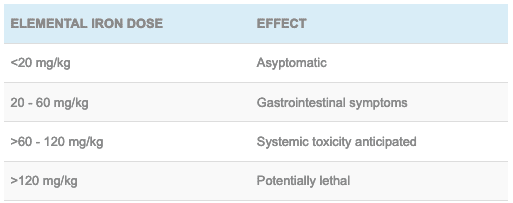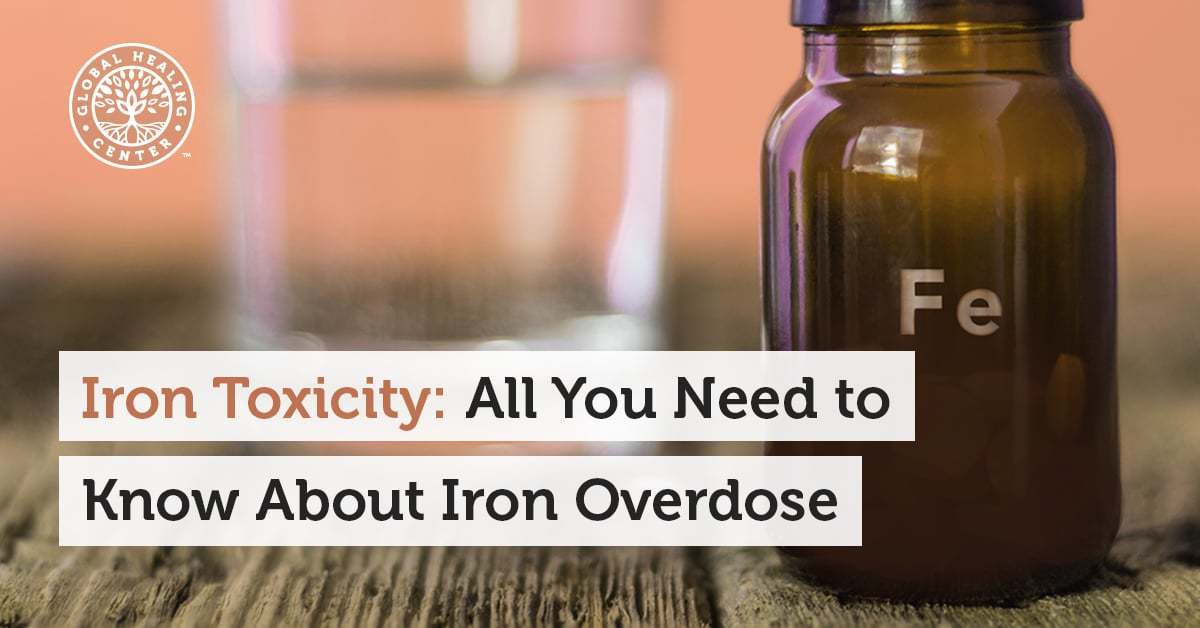

Because perinatal iron therapy is common, the presence of these tablets, which have a candylike appearence, in the home may pose a hazard to a mother's other young children. Iron is a leading cause of death due to poisoning in young children. Stage 3 toxicity is associated with spontaneous abortion, preterm delivery, and maternal death. or =400 mcg/dL are associated with symptomatic iron overdose. The proportions of patients treated with deferoxamine and total dosages of deferoxamine were similar by peak iron level (> or =400 vs. 6/56, respectively), or experience maternal death (3/3 vs.

1/56, respectively), deliver preterm (2/3 vs. However, patients with stage 3 toxicity were more likely to spontaneously abort (1/3 vs. Peak iron level > or =400 mcg/dL was not associated with increased risk of spontaneous abortion, preterm delivery, congenital anomalies, or maternal death. Compared with women who had lower peak levels, women with peak serum iron levels > or =400 mcg/dL were more frequently symptomatic (12/13 vs. Fourteen publications were identified, describing 61 cases of obstetric iron overdose, including one recent case at our institution. Statistical analysis used the Student t-test, Fisher exact test, or ANOVA, as appropriate.


Two investigators independently extracted data from articles and their references including stage of toxicity (0 = asymptomatic, 1 = gastrointestinal symptoms, 2 = metabolic disturbance, 3 = organ failure), with differences resolved by consensus. A computer search of the English language literature from 1966-1998 used the key words iron toxicity, iron poisoning, deferoxamine, and pregnancy to identify peer-reviewed papers reporting intentional iron overdoses in pregnancy. The objectives of our study were to 1) determine if peak maternal serum iron level or toxicity stage after intentional overdose is associated with adverse maternal-fetal outcome, and 2) describe the use of deferoxamine antidote therapy in obstetric patients.


 0 kommentar(er)
0 kommentar(er)
